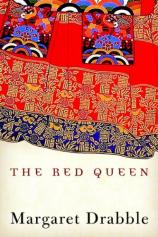Reading Group Guide
Discussion Questions
The Red Queen

1. In the prologue, the author writes, "I have not attempted to . . . reconstruct 'real life' in the Korean court of the late eighteenth century. Instead, I have asked questions about the nature of survival, and about the possibility of the existence of universal transcultural human characteristics." In what ways is the medium of fiction particularly well suited to this task? What do the novel's heroines reveal about the nature of survival and universal experiences?
2. What do "Lady Hong's" opening paragraphs indicate about her childhood? Was she a suitable choice for Prince Sado?
3. In your opinion, did Crown Princess Hyegyong love her husband and their children? How do her feelings toward her father-in-law compare to those she expresses about her own father? What seems to be the role of love in King Yongjo's court?
4. The princess describes her eighteenth-century culture as exuding considerable brutality alongside reverence for serene artwork. How does this particular ruling class reconcile elements of force and fragility? What other observations were you able to make about protocol in the Korean monarchy?
5. The harrowing means by which Prince Sado died, along with the wrenching consequences of his death, indicate much about hierarchies of power and perceptions of honor in his heritage. How does the story of the rice chest affect his widow's narrative?
6. Why did the princess choose Barbara as her messenger? In turn, why does Barbara find herself so captivated by the memoir? What does each heroine think of the other? Does the princess view Barbara as a servant?
7. What is the effect of the princess's ability to comment on (and interact with) the modern world? What is her opinion of it? What do you make of her fascination with Western literature and biographies of other royals?
8. Discuss the many ways in which the princess's life mirrors Barbara's. What enables both of them to enter the inner sanctum of a revered and powerful man? Who are their oppressors? Who are their liberators? In what ways were their marriages and experiences with motherhood similar?
9. What were your impressions of the Korea seen through the princess's memories? How did this compare to exploring these locales as an armchair tourist, with Barbara and Dr. Oo?
10. What personal fears might have inspired Barbara's presentation, "Dying By Lot: Uncertainty and Fatality"? Would her findings offer much comfort to Lady Hong? How does Barbara's approach differ from Jan Van Jost's "Leaden Casket" theories, which are interwoven with literary references?
11. As Barbara encounters the Blue House, a significant aspect of history is noted; the book has encompassed the presence of monarchy, dictators, Communism, and a relatively new democracy. Are political topics reflections of romantic ones in The Red Queen? In what ways do political systems shape the private lives of ordinary citizens, and of those in power?
12. Discuss the significance of the novel's conclusion. Does it contain postmodern features, true to its title? Have Barbara and Van Jost's widow raised a daughter who can heal their emotional wounds (and was that even their intention in the adoption)? What do you predict for Chen Jianyi's future, when she is afforded the kind of retrospect granted to Barbara and Princess Hyegyong?
13. Margaret Drabble's afterword refers to her childhood memory of a red dress and the experience of being "entrapped" when the Crown Princess mentioned longing for a red silk skirt. In what way do these red garments (including those Barbara admires) unite the novel's generations? What are the implications of this color and the very act of costuming in The Red Queen?
14. A Washington Post reviewer once wrote that Margaret Drabble's fiction often features "women of a certain age and class, educated, egocentric, strong, unlucky in love." Would this characterization be true for The Red Queen? What distinctions do you detect among The Red Queen's heroines and those in previous books by Ms. Drabble?
15. If you were able to serve as spokesperson for a figure from history, entrusted with private thoughts like those the princess bestowed on Barbara, whom would you choose?
The Red Queen
- Publication Date: October 4, 2004
- Genres: Fiction
- Hardcover: 352 pages
- Publisher: Houghton Mifflin Harcourt
- ISBN-10: 0151011060
- ISBN-13: 9780151011063







